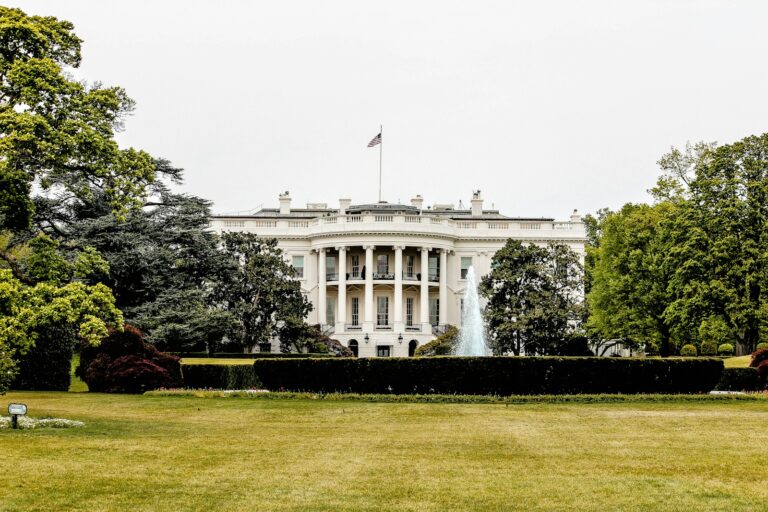State Department Takes Over USAID Programs
- USAID will cease managing US foreign assistance globally.
- The State Department will now lead any desired foreign aid programs.
- President Trump’s administration requested this transfer.
- This change aims to improve efficiency and align aid better with US interests.
- The transition begins on July 1st, 2018.
Understanding the Shift: USAID and Foreign Aid in the US
For many years, the United States government has spent money to help other countries. This assistance is called foreign aid. Foreign aid programs aim to help people overseas, promote American values, and strengthen US interests globally.
For decades, one main government agency handled most foreign aid: the United States Agency for International Development, known as USAID. USAID had specialized experts focused on development projects, health programs, and humanitarian aid. They worked in many countries worldwide.
Recently, however, some leaders in the US government felt USAID wasn’t working well enough. They believed the agency often spent money on projects that didn’t actually help US goals. Decisions were sometimes made locally without enough focus on what was best for America. This led to inefficiency and waste of taxpayer dollars.
Secretary of State Marco Rubio, the top US diplomat responsible for foreign relations, announced a big change on a Tuesday. He decided that USAID would no longer manage foreign aid programs directly. Instead, the main foreign policy agency, the State Department, would take over.
This wasn’t just an idea; President Donald Trump’s administration specifically asked for this move. The announcement marks a significant shift in how US foreign aid is organized and managed.
Let’s explore what this change means in detail.
The Announcement: Secretary Rubio Steps In
Secretary of State Marco Rubio made the important decision official one Tuesday. In a public statement, Rubio explained his reasoning clearly.
He pointed out that USAID had been around for a long time, serving the United States for decades. But, he said, USAID often failed in one crucial way: ensuring that the foreign assistance programs it funded actually worked for America’s interests.
Rubio argued that while USAID experts knew a lot about development work, they didn’t always think big enough or connect projects to larger strategic goals. The programs, despite costing lots of money, sometimes didn’t deliver results that benefited the United States directly or indirectly.
Rubio stated plainly that it was time for a change. He believed the State Department was better equipped to handle this task. The State Department, he said, understands US foreign policy goals, knows how aid fits into global strategy, and deals directly with the leaders of other countries where aid is needed.
Rubio also set a clear deadline: this changeover would happen starting July 1st, 2018. All the foreign assistance programs the US government decided to continue funding would now fall under the State Department’s management.
This announcement marked the end of USAID’s primary role in day-to-day aid implementation and the beginning of a new chapter in US foreign assistance.
What Was USAID and Why Was It Being Phased Out?
It’s important to know what USAID did before this change.
What USAID Was:
USAID was an independent agency of the US government established in 1961 during the presidency of John F. Kennedy. Its main job was to coordinate and manage foreign aid worldwide. Key features included:
- Specialization: USAID built a team of experts knowledgeable about development issues, agriculture, health, democracy, environment, etc.
- Direct Management: It often directly managed aid projects on the ground, working with local partners and governments.
- Development Focus: A core goal was long-term development, helping countries build stronger institutions, economies, and infrastructure.
Why the Concerns Were Raising:
Despite its good work, USAID faced growing criticism over the years, particularly from the Trump administration.
- Lack of Strategic Focus: Critics argued USAID sometimes funded projects based on local popularity or established programs, rather than linking aid tightly to US national security or foreign policy objectives. For example, funding a school in a country might happen, but the decision didn’t always consider how that school affected America’s relationship with that nation or regional stability.
- Bureaucracy and Slowness: USAID’s structure was seen by some as overly bureaucratic and slow to respond, especially during emergencies like natural disasters or political crises.
- Duplication and Waste: There were concerns that multiple government agencies (like USAID, the Department of Agriculture, or even the military) sometimes funded similar projects in the same area without coordination, leading to duplication of effort and potential waste of money.
- Value for Money: The most frequent complaint was that USAID wasn’t ensuring taxpayer money was used as effectively as it could be. Critics believed aid wasn’t reaching the right places or achieving the desired impact because the decision-making process lacked sufficient strategic oversight from the main foreign policy agency.
In other words, the feeling was that aid dollars weren’t always being used smartly to advance American interests abroad.
The New Plan: State Department Takes Control
So, what does this mean for foreign aid moving forward? The plan was for the State Department to assume direct management of foreign assistance programs.
The Role of the State Department:
The State Department has a broader mandate than USAID. While USAID focused purely on aid implementation, the State Department handles overall US foreign policy and relations with other countries. Key aspects of its new role included:
- Strategic Alignment: The expectation was that the State Department would ensure foreign aid programs were directly linked to US diplomatic priorities and national security interests. A program might be funded only if it served a specific goal related to trade, counter-terrorism, human rights, or regional stability.
- Direct Liaison: The State Department would deal directly with foreign governments and international partners regarding aid. USAID acted as a middle layer, but that layer was now being removed for program management.
- Potential for Faster Decisions: By bringing aid decisions closer to foreign policy decisions, the administration hoped for a more streamlined and potentially faster process, especially for urgent situations.
It’s crucial to note that the change didn’t mean all foreign aid funding would disappear or stop. President Trump and the administration identified specific programs they wished to continue. These designated programs were to be handed over to the State Department.
Implementation Starting July 1st:
This date marked the beginning of the transition period. USAID would still exist, but its role regarding direct foreign assistance management was drastically reduced. The handover process involved transferring responsibility for specific programs and coordinating how funding would now flow through the State Department channels.
Who Benefits and Who Might Be Affected?
Different groups could be impacted by this change.
- USAID: USAID likely aimed to refocus its efforts. Perhaps its expertise shifted towards technical assistance, coordination with other US government agencies on aid, or analysis rather than direct field management.
- Foreign Governments: Recipient countries saw changes in how aid was delivered. They would now deal directly with State Department bureaus instead of primarily with USAID. The selection criteria for receiving aid might have shifted, potentially influencing which projects were funded.
- NGOs and Implementers: Non-governmental organizations and local groups receiving aid might need to adjust how they worked. They might need to build relationships with State Department officials instead of USAID counterparts, and understand new rules for proposal submission and funding.
- American Taxpayers: The administration likely believed this change would lead to more efficient spending. By linking aid more closely to foreign policy goals under the State Department, they aimed to ensure funds were used where they were most needed and had the biggest impact for US interests.
- Future Administrations: By consolidating aid within the main foreign policy apparatus, future presidents could potentially exert more control over foreign aid priorities from the outset.
What This Meant for US Foreign Policy:
This decision reflected a broader trend during the Trump administration to consolidate government functions and streamline operations. It also signaled a potential shift in priorities, emphasizing national security and strategic interests more heavily in foreign aid decisions. Critics worried about the potential negative consequences of moving away from USAID’s long-developed expertise in development work. Others saw it as an opportunity to make foreign aid more targeted and effective in advancing US objectives on the world stage.
Conclusion: A New Era for US Foreign Aid?
The handover of foreign aid programs from USAID to the State Department marked a significant restructuring within the US government’s approach to international assistance.
Secretary Rubio’s announcement was clear: USAID’s model of managing foreign aid was deemed inefficient for advancing American interests. The decision was driven by the belief that aid needed to be more strategically linked from the start, under the direct supervision of the Secretary of State.
Starting July 1st, the landscape changed. The focus shifted from broad development goals managed by specialists to aid integrated directly into the foreign policy toolbox. The hope was that this change would make foreign aid more effective, efficient, and aligned with the priorities of the United States.
While the future details and long-term effects would unfold over time, this announcement signaled a fundamental shift in how the US government planned to conduct its international development and humanitarian assistance efforts.










